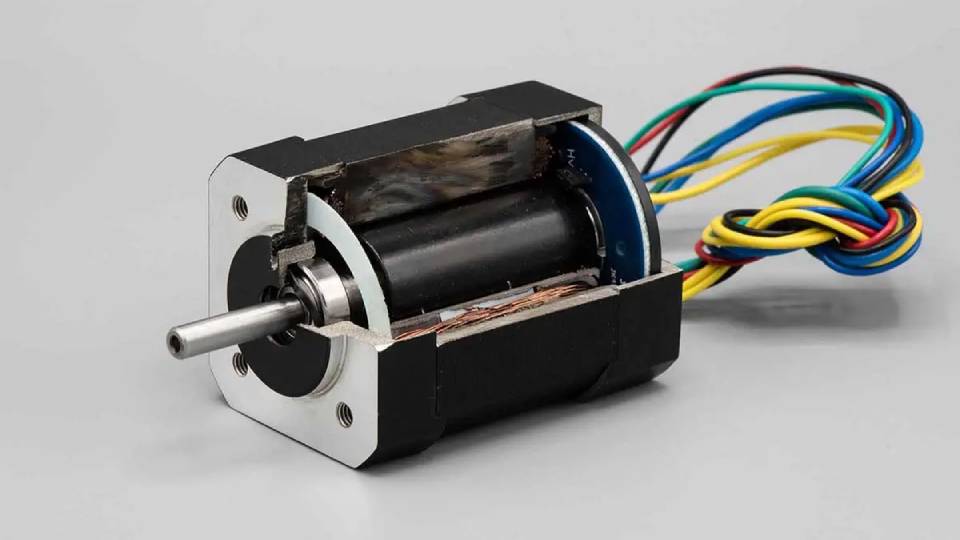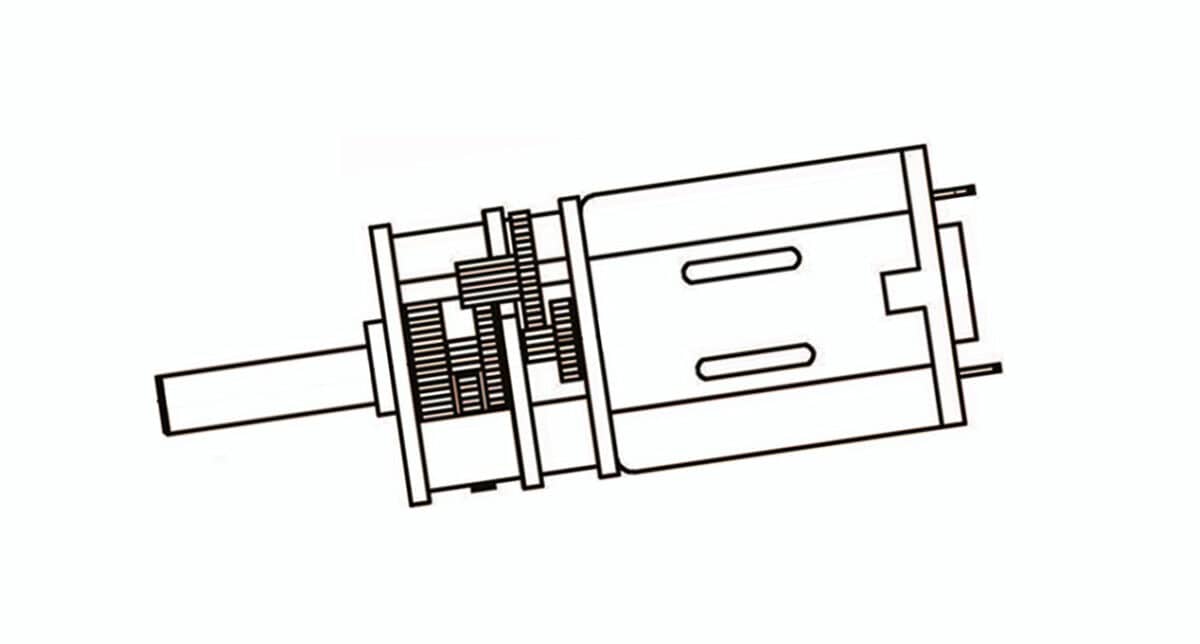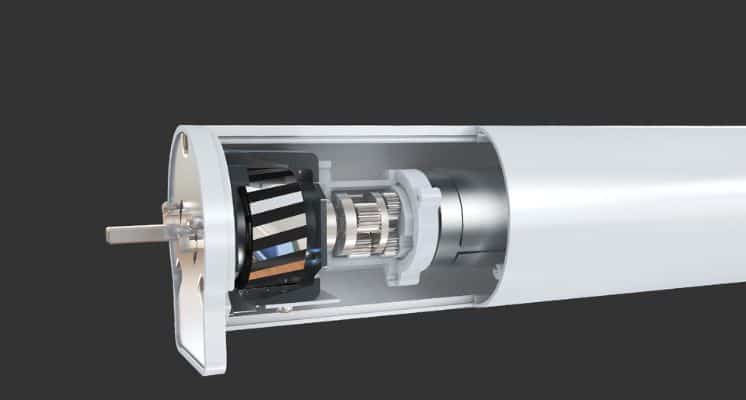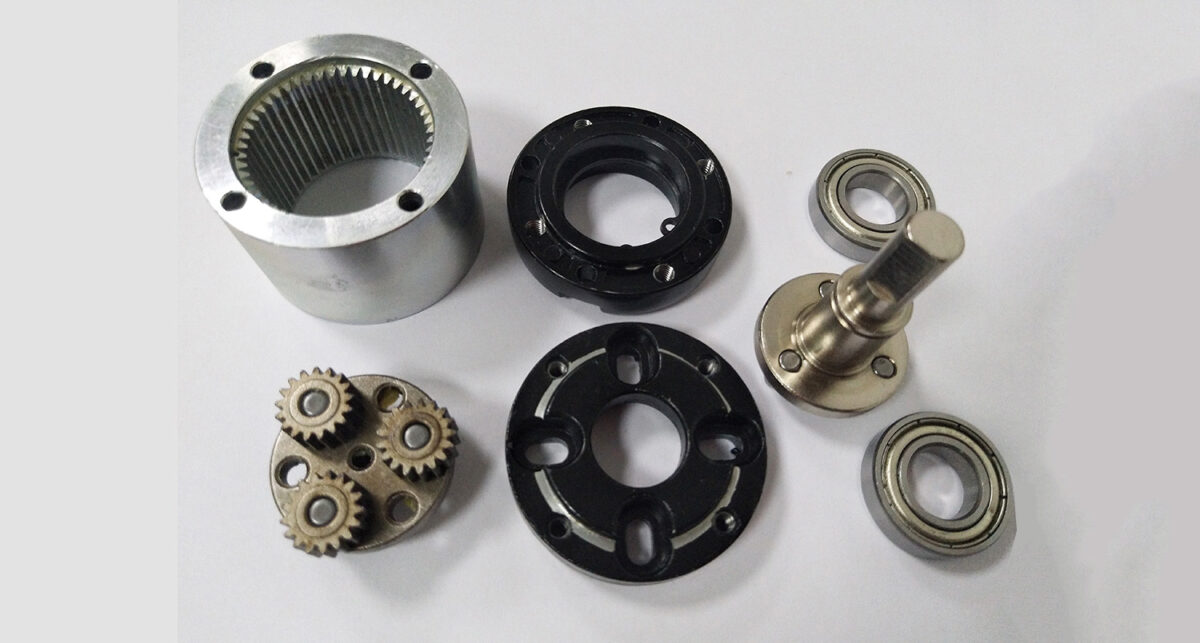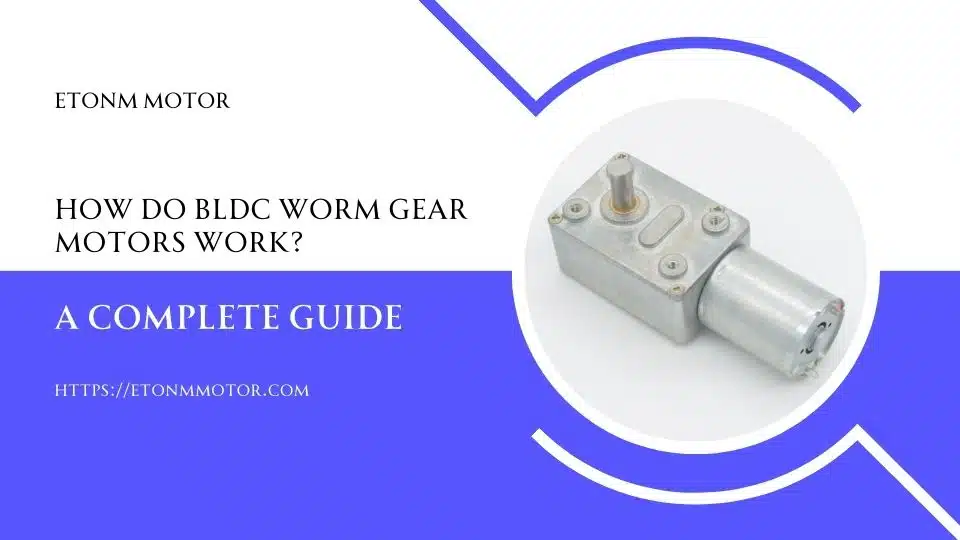Explore the intricate components of Brushless DC Motors and understand how each element contributes to their superior performance in compact applications. From permanent magnets to electronic commutation systems, learn what makes BLDC motors the driving force behind modern precision devices.
Table of Contents
Introduction
Ever wondered what makes a Brushless DC Motor tick? These compact powerhouses have revolutionized everything from smart home devices to medical equipment, yet many of us rarely think about the intricate engineering hidden inside. Unlike their traditional brushed counterparts, BLDC motors pack sophisticated components into surprisingly small packages, delivering exceptional performance without maintenance headaches.
I’ve spent years working with various motor technologies, and I can tell you firsthand that understanding the components of a brushless motor isn’t just technical trivia – it’s crucial knowledge for anyone involved in product design or maintenance. Whether you’re developing a new robotic application or troubleshooting a precision instrument, knowing what’s under the hood of your BLDC motor can make all the difference.
What makes these motors particularly fascinating is their careful orchestration of mechanical and electronic elements. Each component plays a vital role in creating that smooth, efficient motion we’ve come to rely on. From precisely arranged permanent magnets to sophisticated control systems, every piece works in harmony to deliver the performance that modern applications demand.
In this guide, we’ll break down each component of a Brushless DC Motor, exploring how they work together and why they matter. Trust me – once you understand these building blocks, you’ll never look at your smart devices quite the same way again.
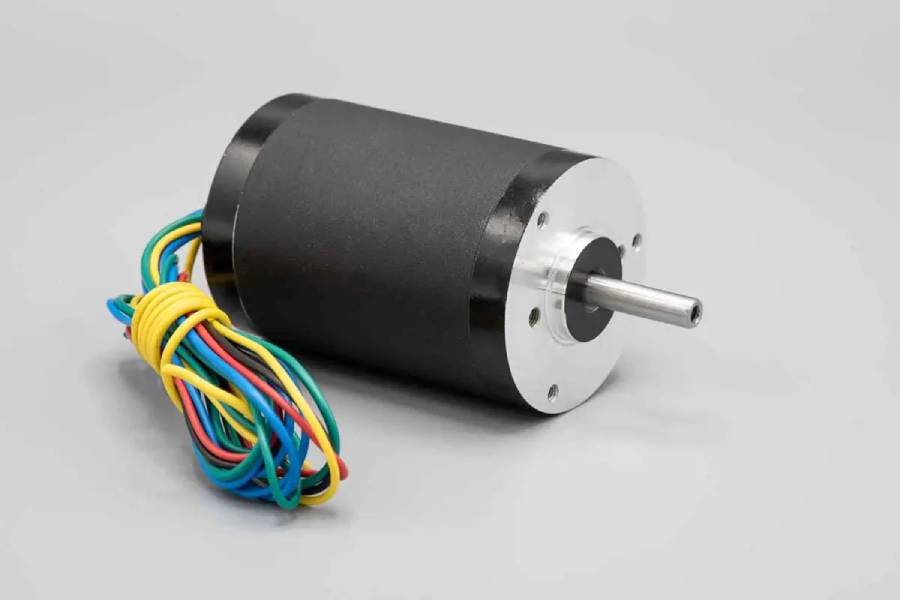
Basic Structure Overview of BLDC Motor
When you first peek inside a Brushless DC Motor, you might be struck by its deceptively simple layout. But don’t let that fool you – the apparent simplicity masks a cleverly engineered design that turns basic physics into precise motion. Let me walk you through the fundamental arrangement that makes these motors tick.
At its heart, a BLDC motor flips the traditional motor design on its head. While conventional brushed motors house their magnets in the outer shell, brushless motors typically feature a fixed outer stator containing electromagnetic coils, with a rotor carrying permanent magnets spinning inside. This inside-out arrangement isn’t just a design quirk – it’s a game-changer for both performance and longevity.
Think of it like a perfectly choreographed dance. The stator, our steadfast partner, remains fixed in place while directing the show. Its carefully wound copper coils create a rotating magnetic field that leads the dance. The rotor, carrying its permanent magnets, follows this magnetic guidance with remarkable precision. What’s particularly clever about this setup is how it eliminates the need for physical contact between moving parts – no brushes required!
The real magic happens in how these components work together. Unlike traditional motors that rely on mechanical brushes to switch current direction, BLDC motors employ electronic commutation. This means the motor’s brain – its controller – handles all the timing and switching electronically. It’s like replacing a mechanical orchestra conductor with a digital one, resulting in more precise control and virtually silent operation.
This fundamental arrangement delivers several key advantages:
- Improved heat dissipation since the coils are on the outside
- Better speed control and positioning accuracy
- Significantly reduced maintenance needs
- Higher efficiency in a compact form factor
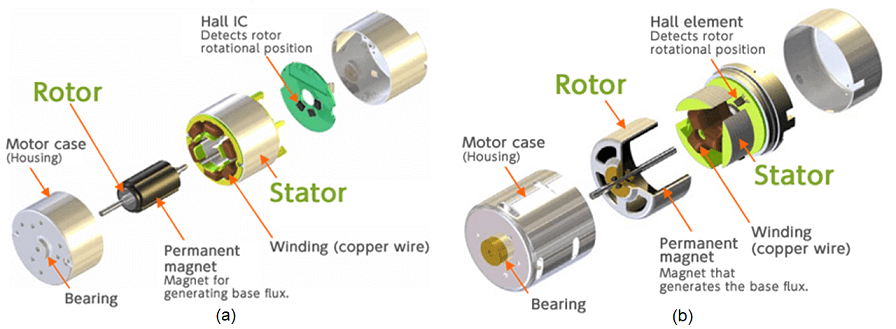
Core Components Breakdown of BLDC Motor
Stator Assembly: The Powerhouse
The stator assembly might look like a simple ring of metal, but it’s actually an engineering marvel at the heart of any BLDC motor. I’ve always found it fascinating how such a stationary component can create such dynamic motion. The stator core, typically built from thin laminated steel sheets, forms the backbone of this assembly. These laminations aren’t just for show – they significantly reduce energy-wasting eddy currents, a detail that took engineers years to perfect.
Around this core, you’ll find the motor windings – precisely wound copper coils arranged in a specific pattern. The way these windings are configured directly impacts the motor’s performance characteristics. Think of them as the muscle fibers of the motor, each carefully positioned to provide maximum torque when energized. In our compact motors at Etonm, we’ve refined these winding patterns to achieve optimal performance in surprisingly small packages.
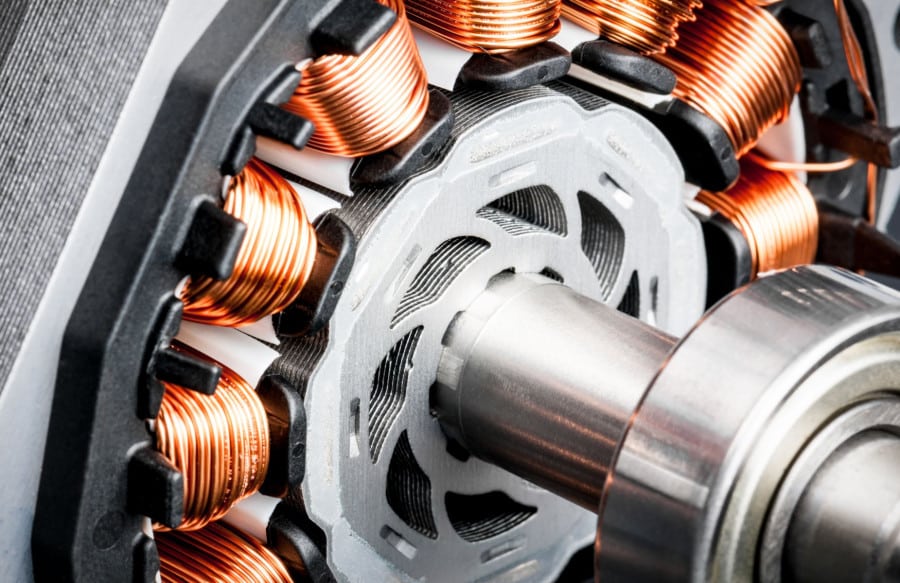
Rotor Components: The Dynamic Center
At the heart of motion sits the rotor – a precisely balanced assembly that carries the permanent magnets. Modern BLDC motors typically use rare earth magnets, most commonly neodymium-iron-boron (NdFeB) alloys. These aren’t your refrigerator magnets; they’re incredibly powerful for their size, enabling the exceptional power density that makes brushless motors so effective in compact applications.
The shaft assembly deserves special attention too. It might seem like just a metal rod, but it’s precisely machined to maintain perfect alignment even at high speeds. The bearing system is equally crucial – we typically use sealed precision bearings that ensure smooth rotation while keeping dust and debris out. This attention to detail in the rotor assembly is what allows for those whisper-quiet operations in sensitive applications like medical devices.
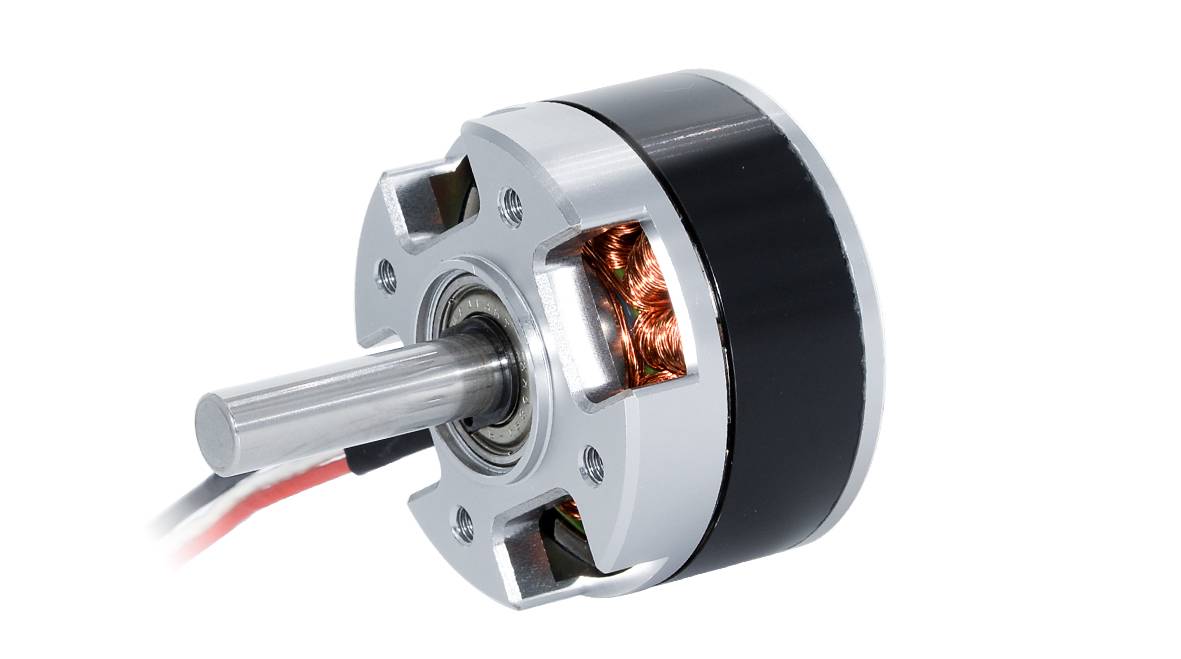
Electronic Control System: The Brain
Here’s where BLDC motors truly shine. The electronic control system is what sets them apart from their brushed ancestors. At its core are Hall sensors – tiny magnetic field detectors that provide constant feedback about the rotor’s position. This real-time positioning information is crucial for precise motor control, especially in applications requiring exact movements.
The motor controller processes this feedback and makes split-second decisions about which windings to energize and when. It’s like having a tiny computer orchestrating every rotation. The power electronics handle the heavy lifting, managing the current flow through the windings with impressive efficiency. This sophisticated control system is what enables features like variable speed control and position holding that many modern applications require.
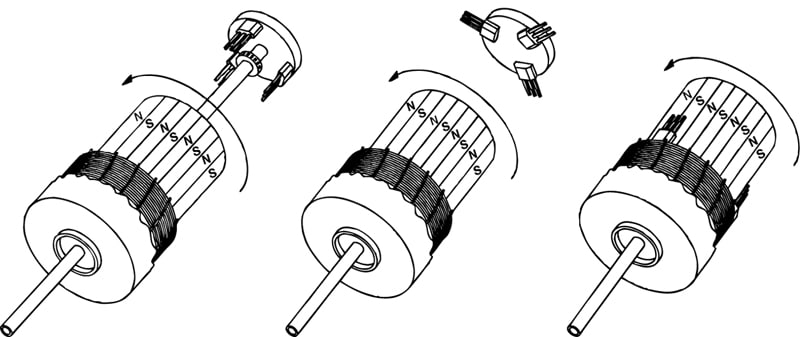
These components work in perfect harmony to create a system that’s:
- More efficient than traditional motors
- Capable of precise speed and position control
- Highly reliable with minimal maintenance needs
- Adaptable to various control schemes
Supporting Components of BLDC Motor
The difference between a good BLDC motor and a great one often lies in the details – specifically, in the supporting components that many overlook. Having worked with miniature motors for years, I’ve learned that these seemingly minor elements can make or break a motor’s performance in real-world applications.
Let’s start with the housing. In compact BLDC motors, the housing isn’t just a protective shell; it’s an integral part of the motor’s thermal management system. We typically craft these housings from aluminum alloys, which offer an excellent balance of weight, strength, and heat dissipation. For instance, in our smart home applications, where motors often need to run continuously, proper housing design helps maintain optimal operating temperatures without adding bulk.
Cooling mechanisms deserve special attention, particularly in enclosed applications. Even though brushless motors are inherently more efficient than their brushed counterparts, they still generate heat that needs to be managed. In micro-sized motors, we often incorporate innovative cooling features directly into the housing design – things like strategically placed ventilation channels or heat-dissipating fins. You might not notice these features at first glance, but they’re crucial for maintaining performance in demanding applications like robotic systems.
The connection terminals might seem straightforward, but they’re actually quite sophisticated in modern BLDC motors. We’ve moved well beyond simple power connections. Today’s terminals often include interfaces for Hall sensor signals, encoder feedback, and even digital communication protocols. In our security and electric valve applications, these connection points need to be not just electrically efficient but also vibration-resistant and durable enough to withstand years of use.
A few key considerations when evaluating these supporting components:
- Environmental protection requirements
- Space constraints in the final application
- Heat dissipation needs
- Installation and maintenance accessibility
- Long-term reliability factors
Component Integration
Think of a BLDC motor as a symphony orchestra – each component is like a talented musician, but the magic happens when they all play together in perfect harmony. Having assembled countless motors in our production line, I’ve learned that successful component integration is both an art and a science.
The assembly process starts with precision alignment. The rotor’s permanent magnets must be positioned perfectly relative to the stator windings to achieve optimal performance. It’s like fitting together pieces of a three-dimensional puzzle, where even a slight misalignment can affect the motor’s efficiency. In our experience manufacturing motors for precision medical equipment, we’ve found that maintaining tight tolerances during assembly directly impacts the final performance characteristics.
Quality factors play a crucial role in successful integration. Every connection point, every interface between components needs to meet specific standards. For example, when assembling motors for security applications, we pay special attention to the bearing installation process. The bearings must be pressed in with exactly the right force – too much pressure can damage them, too little can lead to stability issues. This attention to detail ensures our BLDC motors maintain their performance over millions of cycles.
Here’s something many don’t realize about component integration: temperature management needs to be considered at every step. The way components are fitted together creates thermal pathways that affect how heat moves through the motor. In compact designs, like those used in smart home devices, we carefully plan these thermal pathways to maintain optimal operating temperatures without compromising the motor’s size advantages.
Common integration challenges we’ve mastered include:
- Balancing mechanical tolerances across all components
- Ensuring proper electrical isolation where needed
- Managing thermal expansion differences between materials
- Maintaining consistent quality across high-volume production
- Optimizing assembly processes for miniaturization
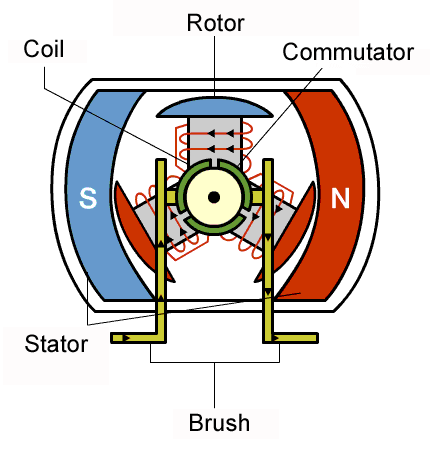
Maintenance Considerations
Despite their reputation for being maintenance-free, even the best BLDC motors benefit from informed maintenance practices. After seeing thousands of motors in action across various applications, I can tell you that understanding which components to monitor can significantly extend your motor’s lifespan.
Let’s talk about critical components first. While brushless motors eliminate the need for brush replacement, their bearings remain a key wear point. In our experience with vending machine applications, bearing health directly impacts motor performance and longevity. Listen for any unusual noises – they’re often the first sign that bearings need attention. Modern BLDC motors use sealed bearings, but they can still degrade over time, especially in high-cycle applications.
Temperature monitoring deserves special attention. Most people don’t realize that even small changes in operating temperature can indicate potential issues. When we service motors used in smart home applications, we often find that unexpected temperature increases point to problems with either the control system or mechanical alignment. It’s worth investing in simple temperature monitoring tools – they can help you catch issues before they become serious problems.
Preventive care makes a huge difference in motor longevity. Here’s what we’ve learned works best:
- Regular inspection of mounting points for security
- Checking power connections for signs of degradation
- Monitoring vibration levels during operation
- Keeping the motor housing clean for optimal heat dissipation
- Verifying sensor functionality periodically
One often overlooked aspect is the environmental impact on motor maintenance. In medical care applications, where cleanliness is paramount, we’ve found that even dust accumulation can affect cooling efficiency. Similarly, in security applications exposed to varying weather conditions, moisture protection becomes a critical maintenance concern.
Pro tip: Keep a maintenance log for each motor. Track things like:
- Operating hours
- Temperature patterns
- Unusual noise occurrences
- Performance changes
- Environmental conditions
Conclusion
As we’ve explored the intricate world of BLDC motor components, one thing becomes clear: these compact powerhouses are marvels of modern engineering. Each component, from the precisely wound stator to the sophisticated control system, plays a vital role in delivering the performance that today’s applications demand.
Looking ahead, the evolution of Brushless DC Motor technology continues to push boundaries. We’re seeing exciting developments in materials science leading to even more efficient magnets, and advances in control systems that promise even greater precision. At Etonm, we’re particularly excited about how these improvements will enable new possibilities in robotics and medical applications.
The components we’ve discussed today are more than just parts – they’re the building blocks of innovation across industries. Whether you’re designing a new smart home device or maintaining critical medical equipment, understanding these components gives you a significant advantage. The future of BLDC motors looks promising, with miniaturization and efficiency improvements continuing to drive innovation.
Have questions about implementing BLDC motors in your application? We’d love to hear from you. Share your thoughts in the comments below, or reach out to our team for personalized guidance. Don’t forget to subscribe to our newsletter for the latest updates on motor technology and applications.
Want to learn more? Check out our related articles:
- How to Choose the Right BLDC Motor for Robotics Applications
- BLDC Motor vs Brushed Motor: Which is Better for Your Needs?
- Top 5 Applications of Brushless DC Motors in Industrial Automation
- Brushless DC Motors in Medical Devices: The Ultimate Guide to BLDC Motor Applications
- Why BLDC Motors Are the Future of Electric Vehicles: A Complete Guide
- What is a BLDC Worm Gear Motor? A Comprehensive Guide for 2025
- How Do BLDC Worm Gear Motors Work? A Complete Guide
- What Factors Affect the Performance of Brushless Motors? A Comprehensive Guide
- How to Choose the Right Brushless Motor for Your Drone: A Complete Guide
- What Are the Key Advantages of Brushless Motors?
Remember, in the world of precision motion control, knowledge of your motor’s components is power. Stay curious, keep learning, and let’s continue pushing the boundaries of what’s possible with brushless motor technology.

